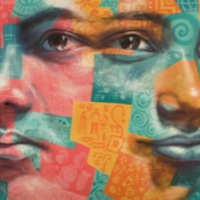
Trishna
The Global Slavery Index 2018 estimates that on any given day there were nearly 8 million people living in modern slavery in India. The GSI 2018 reports an emerging trend in northeast India where organised trafficking syndicates operate along the open and unmanned international borders, duping or coercing young girls seeking employment outside their local area in to forced sexual exploitation. Many women and girls are lured with the promise of a good job but then forced in to sex work, with a 'conditioning' period involving violence, threats, debt bondage and rape. In 2010, Trishna was 14 years old when she met a boy who lived in a village close to hers. He kidnapped her, took her to different city and sold her to traffickers who said she would have to dance to earn back the money they had paid. While Trishna was finally rescued after around 6 months, her experience with the police was not a pleasant one. They sexual abused her, threatening to tell people that she had chosen this life. Upon returning home, people in Trishna’s village did not treat her the same and her mental health has suffered as a result. In 2015, Trishna was finally able to get help through a psychiatrist and an NGO who reached out to assist her.
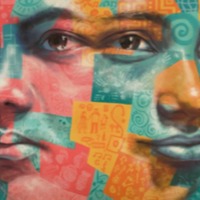
I
There are an estimated 145,000 people living in conditions of modern slavery in Italy (GSI 2018). Italy is a destination, transit, and source country for women, children, and men subjected to sex trafficking and forced labour. Victims originate from Nigeria, Romania, Morocco, China, and other countries. Female victims are often subjected to sex trafficking in Italy after accepting promises of employment as dancers, singers, models, restaurant servers, or caregivers. Romanian and Albanian criminal groups force Eastern European women and girls into commercial sex. At the age of 16, I’s parents arranged for her to marry a man twice her age, however this man was ill and was hospitalised some months later. After a while, it was arranged for I to marry another man named G., who convinced her they would have a better life in Italy. Upon arrival in Italy, I. was told she would have to work to pay for rent and forced into prostitution. I. was able to escape when her mother had denunciated their marriage and G was forced to return her to Albania and her family.
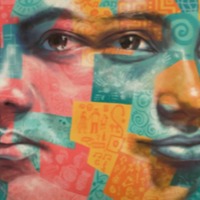
Anna C
There are an estimated 136,000 people living on conditions of modern slavery un the United Kingdom (Global Slavery Index 2018). According to the 2017 annual figures provided by the National Crime Agency, 5, 145 potential victims of modern slavery were referred through the National Referral Mechanism in 2017, of whom 2,454 were female, 2688 were male and 3 were transgender, with 41% of all referrals being children at the time of exploitation. People are subjected to slavery in the UK in the form of domestic servitude, labour exploitation, organ harvesting and sexual exploitation, with the largest number of potential victims originating from Albania, China, Vietnam and Nigeria. This data however does not consider the unknown numbers of victims that are not reported. Anna was living in Albania when she ran away with her boyfriend to escape an arranged marriage. She travelled to Kosovo where she thought she would build a life with the man she loved. However, instead Anna was forced in to a room, locked up and was repeatedly raped by up to ten men a day. Anna was moved from place to place, never knowing where she was. She was finally able to escape while in England and was referred to Hestia.
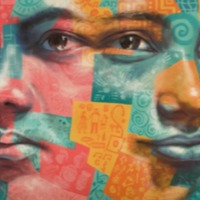
Borey
There are an estimated 610,000 people living in conditions of modern slavery in Thailand (GSI 2018). Men, women and children are victims of human trafficking for forced labour in the Thai fishing industry, subjected to physical abuse, excessive and inhumane working hours, sleep and food deprivation, forced use of methamphetamines and long trips at sea confined to the vessel. Due to the fishing industry relying on trans-shipments at sea to reduce expenditure, some find themselves trapped on long-haul trawlers for years at a time. This makes the monitoring of enslaves labour on fishing vessels costly and difficult. Borey was trafficked from Cambodia on to a Thai fishing vessel. Though he has now escaped conditions of slavery, Borey still suffers mental health issues from his trauma.
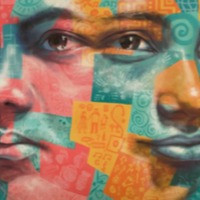
Inez
The US Department of Justice estimates that of the 14,500 and 17,500 foreign-born individuals trafficked into the US annually, some 80 percent are female, and 70 percent of these women end up as sex slaves. Feeder countries include Albania, the Philippines, Thailand, Mexico (many from the central region of Tlaxcala, a haven for modern-day slave traders), Nigeria, and Ukraine. Often the women are forced to work to pay off the debts imposed by their smugglers—debts ranging from $40,000 to $60,000 per person. They might perform 4000 acts of sexual intercourse each year to meet their quota, at $10 to $25 per act. In 1997, at the age of 18, Inez was trafficked from Mexico into sex slavery in the US. She was transported into Texas, then to a trailer in Florida. Up to four young women worked in the same trailer, each of them having sex with up to 35 men a day, for 12 hours a day. They were constantly guarded, and beaten and raped by their bosses. After she had been enslaved for several months, FBI agents, along with agents from the Immigration and Naturalization Service and local law offices, raided the brothel. Some of her captors were tried, others escaped and returned to Mexico. Inez now observes that she cannot “seem to get past the ordeal” of slavery. The turning-point from slavery to freedom has not occurred: Inez’s narrative is filled with phrases like “I will never forget,” “I try to act like a normal girl, but it is not always easy,” “I lack confidence and never feel secure.”
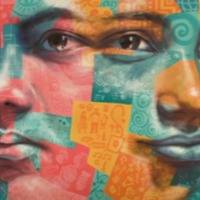
Carina
Carina, like many other children in Haiti, became a Restavèk worker. Restavèk is a traditional system in which Haitian children from homes suffering economic and social difficulties are sent by parents to live with other families and work for them as domestic servants. There is a perception that the child will be enrolled in school by the host household and treated like one of the family, but often the reality is completely different. For many children, the day is filled with work. As Carina describes, even the youngest are expected to fetch heavy buckets of water, hand-wash clothes, carry loads to and from the marketplace, and work in the fields—often laboring for 14 hours a day for no pay. Carina’s story suggests that a model of community education and resistance against the Restavèk system has been effective at freeing children and returning them home.